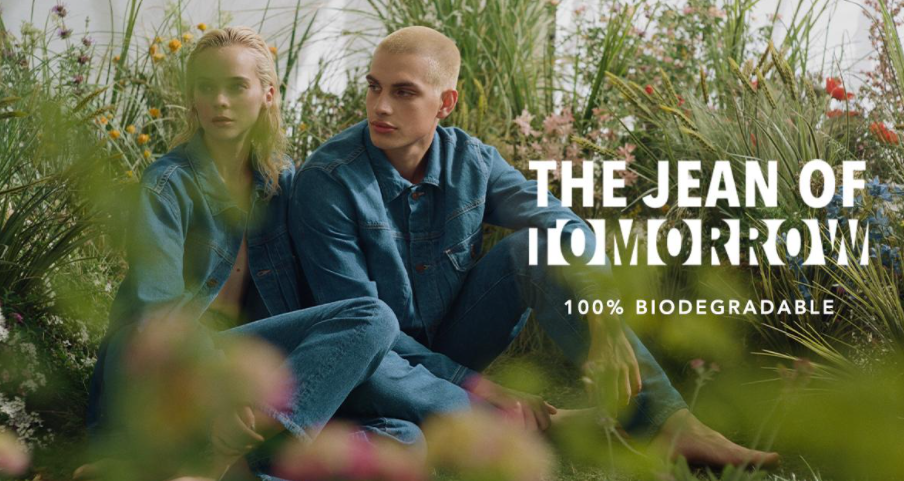Biodegradable Denim
Of the 100 billion garments produced each year, a staggering 92 million tonnes end up in landfills. Some items can take years if not hundred of years to decompose all the while emitting toxic greenhouse gases. It is therefore crucial as a designer to consider fully circular design and understand what happens to your garments at the end of it’s life. One aspect to this is considering the biodegradability of your garment.
I watched a great webinar from Rowan Hunt as part of Transformers Ed, who spoke about his first hand experience of burying his own jeans and tracking its decomposition. After a year, the cotton had mostly decomposed, however the metal trims, synthetic labelling and synthetic thread was still present, providing a clear outline of the jean remnants. This would take many more years to decompose further, with some elements never being possible to breakdown.
It really highlighted the lasting impact of a garment and the need to design for circularity. Firstly, the intention to create a biodegradable garment should not hinder aspects of durability and recyclability. Ideally these principles should come first to ensure a long lifespan of your garment and avoid over reliance on virgin resources. Additionally a material that can break down, does not necessarily biodegrade cleanly and it is important to still be mindful of the potential harmful chemicals that could be released into the soil and atmosphere. Garments should still be designed to last, with repair, reuse and recycle at the forefront.
One brand tackling this challenge is AG Denim with their 100% biodegradable denim range- ‘The jean of tomorrow’.
They have taken into account the full life cycle of the garment from it’s creation and production right through to end of life. The collection features:
Natural fibres- including hemp, TENCEL™ Lyocell, organic cotton.
Corozo buttons- 100% vegan and recyclable, made from Tagua nut.
Distilled indigo- an eco-friendly dye technology, using pre-reduced liquid indigo dyes which requires less water, chemicals, and energy during the dye process.
Reduced chemicals- formaldehyde-free, biodegradable chemicals that require fewer wash cycles. Washes created from Ozone and laser technology.
Reduced water- Water filtration systems that recycle over 30 million gallons of water per year.
Seed paper - hangtag and over-rider replaced with seed paper made from post consumer materials. They can be planted to grow wildflowers.
Soy based inks- labelling replaced with soy based screen prints for wash care, size labels and branding. Made from soybeans mixed with waxes and resins, this ink releases less than 5% volatile organic compounds reducing the amount of air pollutants.








